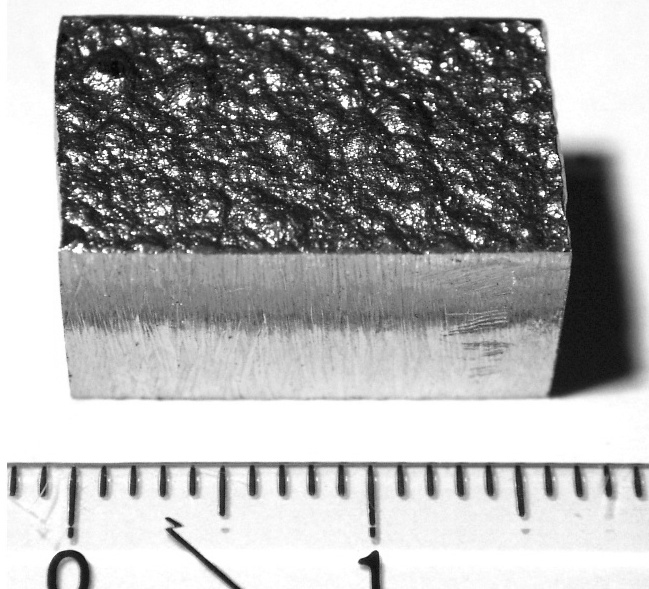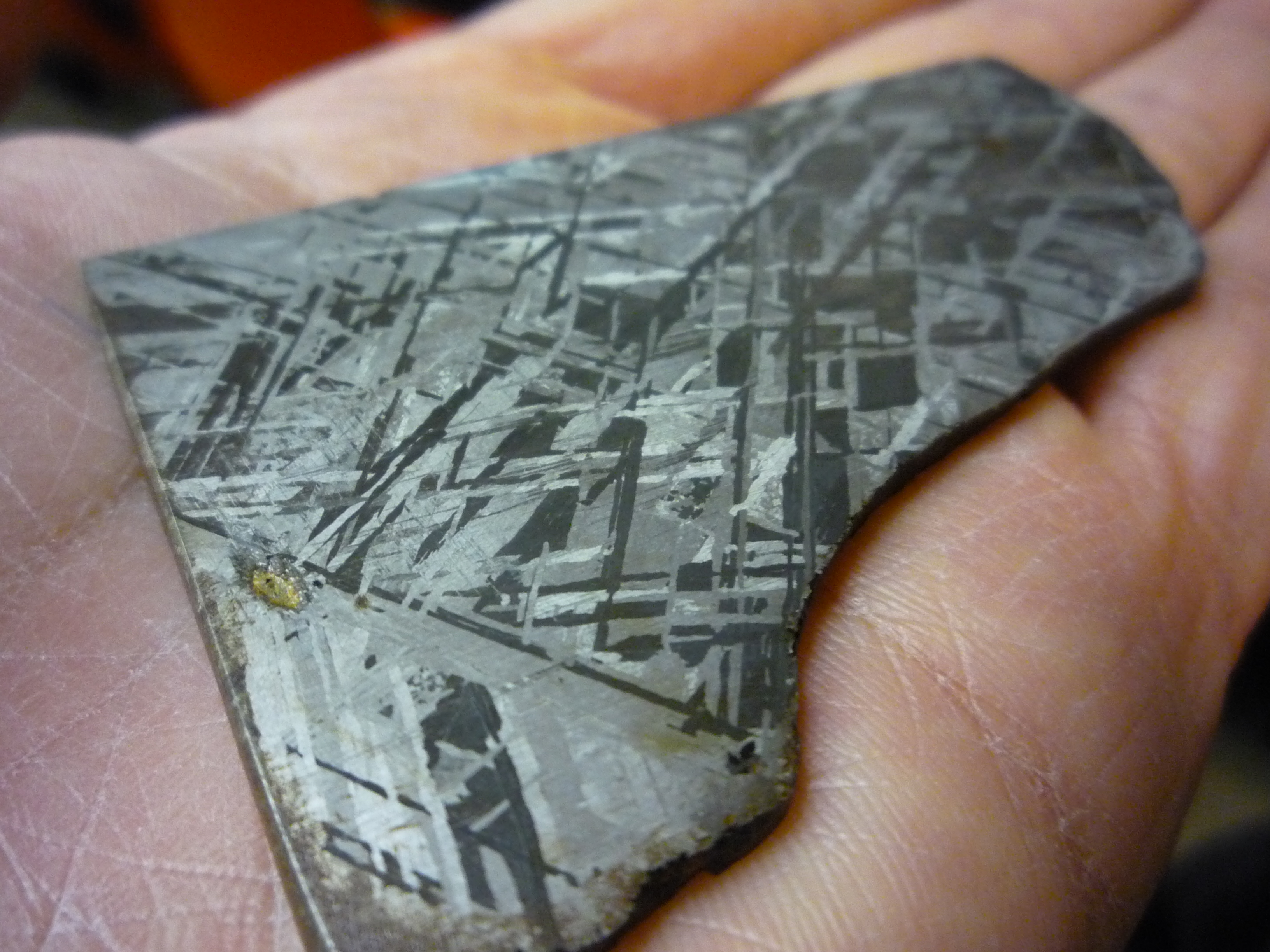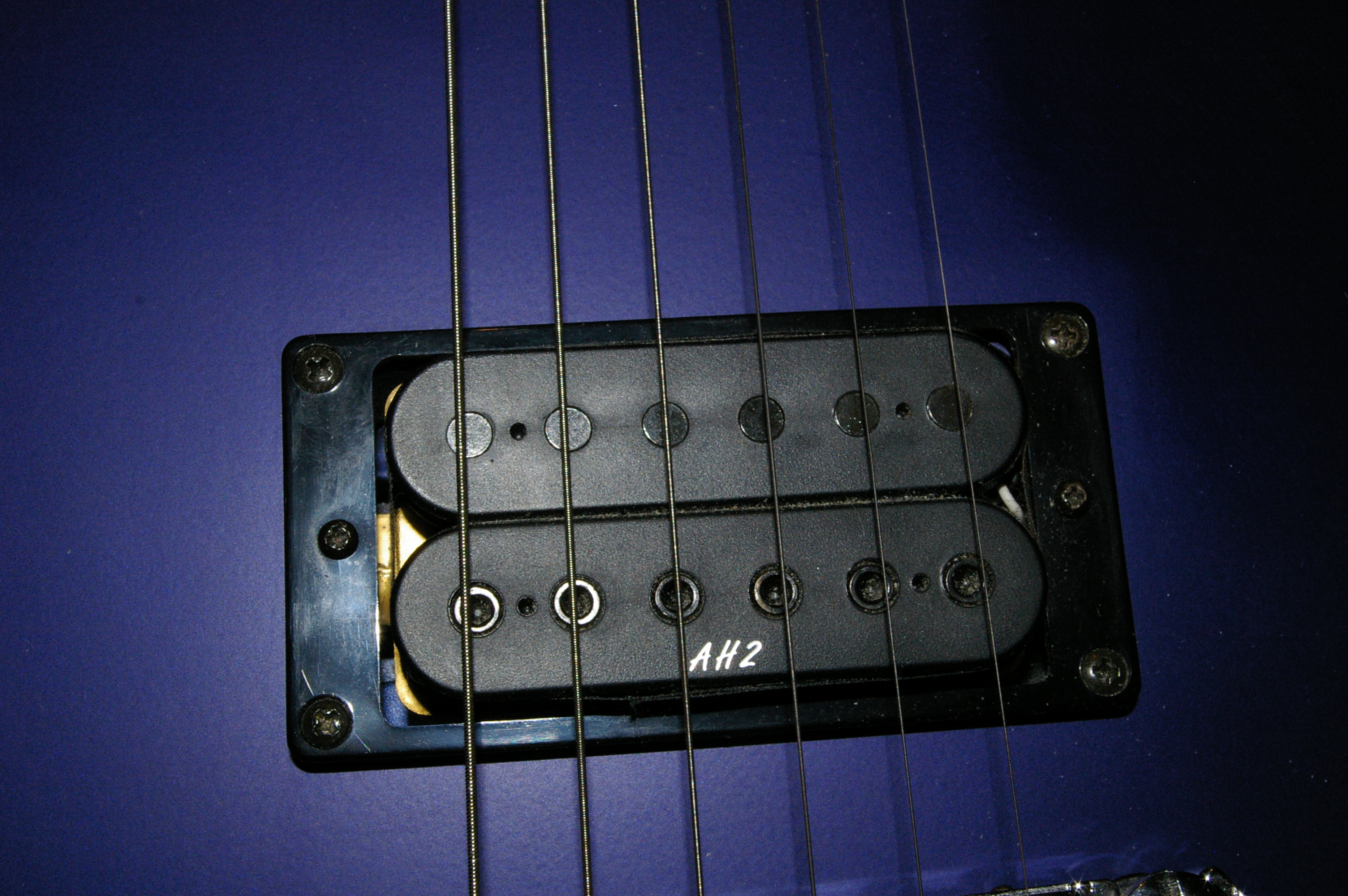|
Cunife
Cunife is an alloy of copper (Cu), nickel (Ni), iron (Fe), and in some cases cobalt (Co). The alloy has the same linear coefficient of expansion as certain types of glass, and thus makes an ideal material for the lead out wires in light bulbs and thermionic valves. Fernico exhibits a similar property. It is a magnetic alloy and can be used for making magnets. Cunife has a magnetic coercivity of several hundred oersteds. Unlike most high coercivity magnetic materials which are hard and brittle and need to be cast into shape, cunife can be drawn into thin wires. Wires as thin as five thou can be produced this way. Thicker rods of the material can be threaded which is also something that is not possible with the more commonly used magnetic materials. In the early 1970s, Fender Musical Instruments Corporation used Cunife magnets in their Wide Range humbucker A humbucker, humbucking pickup, or double coil, is a guitar pickup that uses two wire coils to cancel out noisy ... [...More Info...] [...Related Items...] OR: [Wikipedia] [Google] [Baidu] |
Fernico
Fernico describes a family of metal alloys made primarily of iron, nickel and cobalt. The family includes Kovar, FerNiCo I, FerNiCo II, and Dumet. The name is made up of the chemical symbols of its constituent three elements. "Dumet" is a portmanteau of "dual" and "metal," because it is a heterogeneous alloy, usually fabricated in the form of a wire with an alloy core and a copper cladding. These alloys possess the properties of electrical conductivity, minimal oxidation and formation of porous surfaces at working temperatures of glass and thermal coefficients of expansion which match glass closely. These requirements allow the alloys to be used in glass seals, such that the seal does not crack, fracture or leak with changes in temperature. Dumet is most commonly used in seals where lead-in wires pass through the glass bulb wall of standard household electric lamps (light bulbs) among other things. The two Fernico alloys both consist of iron (Fe), nickel (Ni), and cobalt (Co). ... [...More Info...] [...Related Items...] OR: [Wikipedia] [Google] [Baidu] |
Fender Wide Range
The Fender Wide Range Humbucker is a humbucker guitar pickup, designed by Seth Lover for Fender in the early 1970s. This pickup was intended to break Fender's image as a " single coil guitar company," and to gain a foothold in the humbucker guitar market dominated by Gibson. The pickups enjoyed some adoption, though Fender's single-coil pickups retained widespread popularity. Original Wide Range pickups were available from 1971 and subsequently installed in the Deluxe, Custom and Thinline Telecasters as well as the Starcaster, ceasing production successively in 1979 when these models were discontinued. Fender Japan was the first to introduce a reissue in 1983, followed by the Made in Mexico version around 1998. The Wide Range Pickup found on American-made Fender guitars is the Mexican-made model introduced in 1998. All reissues differed from the original Seth Lover design in construction and sound until 2020, when Fender began manufacturing the pickup with the original ma ... [...More Info...] [...Related Items...] OR: [Wikipedia] [Google] [Baidu] |
Alloy
An alloy is a mixture of chemical elements of which in most cases at least one is a metal, metallic element, although it is also sometimes used for mixtures of elements; herein only metallic alloys are described. Metallic alloys often have properties that differ from those of the pure elements from which they are made. The vast majority of metals used for commercial purposes are alloyed to improve their properties or behavior, such as increased strength, hardness or corrosion resistance. Metals may also be alloyed to reduce their overall cost, for instance alloys of gold and Copper(II) sulfate, copper. A typical example of an alloy is SAE 304 stainless steel, 304 grade stainless steel which is commonly used for kitchen utensils, pans, knives and forks. Sometime also known as 18/8, it as an alloy consisting broadly of 74% iron, 18% chromium and 8% nickel. The chromium and nickel alloying elements add strength and hardness to the majority iron element, but their main function is ... [...More Info...] [...Related Items...] OR: [Wikipedia] [Google] [Baidu] |
Screw Thread
A screw thread is a helical structure used to convert between rotational and linear movement or force. A screw thread is a ridge wrapped around a cylinder or cone in the form of a helix, with the former being called a ''straight'' thread and the latter called a ''tapered'' thread. A screw thread is the essential feature of the screw as a simple machine and also as a threaded fastener. The mechanical advantage of a screw thread depends on its ''lead'', which is the linear distance the screw travels in one revolution. In most applications, the lead of a screw thread is chosen so that friction is sufficient to prevent linear motion being converted to rotary, that is so the screw does not slip even when linear force is applied, as long as no external rotational force is present. This characteristic is essential to the vast majority of its uses. The tightening of a fastener's screw thread is comparable to driving a wedge into a gap until it sticks fast through friction and slight ... [...More Info...] [...Related Items...] OR: [Wikipedia] [Google] [Baidu] |
Cobalt
Cobalt is a chemical element; it has Symbol (chemistry), symbol Co and atomic number 27. As with nickel, cobalt is found in the Earth's crust only in a chemically combined form, save for small deposits found in alloys of natural meteoric iron. The free element, produced by reductive smelting, is a hard, lustrous, somewhat brittle, gray metal. Cobalt-based blue pigments (cobalt blue) have been used since antiquity for jewelry and paints, and to impart a distinctive blue tint to glass. The color was long thought to be due to the metal bismuth. Miners had long used the name ''kobold ore'' (German language, German for ''goblin ore'') for some of the blue pigment-producing minerals. They were so named because they were poor in known metals and gave off poisonous arsenic-containing fumes when smelted. In 1735, such ores were found to be reducible to a new metal (the first discovered since ancient times), which was ultimately named for the ''kobold''. Today, some cobalt is produced sp ... [...More Info...] [...Related Items...] OR: [Wikipedia] [Google] [Baidu] |
Iron
Iron is a chemical element; it has symbol Fe () and atomic number 26. It is a metal that belongs to the first transition series and group 8 of the periodic table. It is, by mass, the most common element on Earth, forming much of Earth's outer and inner core. It is the fourth most abundant element in the Earth's crust, being mainly deposited by meteorites in its metallic state. Extracting usable metal from iron ores requires kilns or furnaces capable of reaching , about 500 °C (900 °F) higher than that required to smelt copper. Humans started to master that process in Eurasia during the 2nd millennium BC and the use of iron tools and weapons began to displace copper alloys – in some regions, only around 1200 BC. That event is considered the transition from the Bronze Age to the Iron Age. In the modern world, iron alloys, such as steel, stainless steel, cast iron and special steels, are by far the most common industrial metals, due to their mechan ... [...More Info...] [...Related Items...] OR: [Wikipedia] [Google] [Baidu] |
Nickel
Nickel is a chemical element; it has symbol Ni and atomic number 28. It is a silvery-white lustrous metal with a slight golden tinge. Nickel is a hard and ductile transition metal. Pure nickel is chemically reactive, but large pieces are slow to react with air under standard conditions because a passivation layer of nickel oxide forms on the surface that prevents further corrosion. Even so, pure native nickel is found in Earth's crust only in tiny amounts, usually in ultramafic rocks, and in the interiors of larger nickel–iron meteorites that were not exposed to oxygen when outside Earth's atmosphere. Meteoric nickel is found in combination with iron, a reflection of the origin of those elements as major end products of supernova nucleosynthesis. An iron–nickel mixture is thought to compose Earth's outer and inner cores. Use of nickel (as natural meteoric nickel–iron alloy) has been traced as far back as 3500 BCE. Nickel was first isolated and classifie ... [...More Info...] [...Related Items...] OR: [Wikipedia] [Google] [Baidu] |
Copper
Copper is a chemical element; it has symbol Cu (from Latin ) and atomic number 29. It is a soft, malleable, and ductile metal with very high thermal and electrical conductivity. A freshly exposed surface of pure copper has a pinkish-orange color. Copper is used as a conductor of heat and electricity, as a building material, and as a constituent of various metal alloys, such as sterling silver used in jewelry, cupronickel used to make marine hardware and coins, and constantan used in strain gauges and thermocouples for temperature measurement. Copper is one of the few metals that can occur in nature in a directly usable, unalloyed metallic form. This means that copper is a native metal. This led to very early human use in several regions, from . Thousands of years later, it was the first metal to be smelted from sulfide ores, ; the first metal to be cast into a shape in a mold, ; and the first metal to be purposely alloyed with another metal, tin, to create bronze, ... [...More Info...] [...Related Items...] OR: [Wikipedia] [Google] [Baidu] |
Guitar Pickup
A pickup is an electronic device that converts energy from one form to another that captures or senses mechanical vibrations produced by musical instruments, particularly stringed instruments such as the electric guitar, and converts these to an electrical signal that is amplified using an instrument amplifier to produce musical sounds through a loudspeaker in a speaker enclosure. The signal from a pickup can also be recorded directly. The first electrical string instrument with pickups, the " Frying Pan" slide guitar, was created by George Beauchamp and Adolph Rickenbacker around 1931. Most electric guitars and electric basses use magnetic pickups. Acoustic guitars, upright basses and fiddles often use a piezo electric pickup. Magnetic pickups A typical magnetic pickup is a transducer (specifically a variable reluctance sensor) that consists of one or more permanent magnets (usually alnico or ferrite) wrapped with a coil of several thousand turns of fine enamel ... [...More Info...] [...Related Items...] OR: [Wikipedia] [Google] [Baidu] |
Humbucker
A humbucker, humbucking pickup, or double coil, is a guitar pickup that uses two wire coils to cancel out noisy interference from Single coil guitar pickup, coil pickups. Humbucking coils are also used in Microphone, dynamic microphones to cancel electromagnetic hum. Humbuckers are one of two main types of guitar pickups. The other is called a single coil. History The "humbucking coil" was invented in 1934 by Electro-Voice, an American professional audio company based in South Bend, Indiana, that Al Kahn and Lou Burroughs incorporated in 1930 for the purpose of manufacturing portable public address equipment, including microphones and loudspeakers. A twin coiled guitar pickup invented by Arnold Lesti in 1935 is arranged as a humbucker, and the patent USRE20070 describes the noise cancellation and current summation principles of such a design. This "Electric Translating Device" employed the solenoid windings of the pickup to magnetize the steel strings by means of switching o ... [...More Info...] [...Related Items...] OR: [Wikipedia] [Google] [Baidu] |
Fender Musical Instruments Corporation
The Fender Musical Instruments Corporation (FMIC, or simply Fender) is an American manufacturer and marketer of musical instruments and amplifiers. Fender produces acoustic guitars, bass amplifiers and public address equipment; however, it is best known for its solid-body electric guitars and bass guitars, particularly the Stratocaster, Telecaster, Jaguar, Jazzmaster, Precision Bass, and the Jazz Bass. The company was founded in Fullerton, California, by Clarence Leonidas "Leo" Fender in 1946. Andy Mooney has served as the chief executive officer (CEO) since June 2015. In January 2020, Servco Pacific became the majority owner after acquiring the shares of TPG Growth. History Origins The company began as "Fender's Radio Service" in late 1938, in Fullerton, California. As a qualified electronics technician, Fender had repaired radios, phonographs, home audio amplifiers, public address systems and musical instrument amplifiers, all designs based on research developed and ... [...More Info...] [...Related Items...] OR: [Wikipedia] [Google] [Baidu] |
Tony Bacon
Tony Bacon is an American veteran professional table football Table football, known as foosball or table soccer in North America, is a tabletop game loosely based on association football. Its objective is to move the ball into the opponent's Scoring in association football, goal by manipulating rods whic ... player. He was a world champion on the Dynamo table in three successive years from 1985 to 1987. See also * List of world table football champions ReferencesProfile at tablesoccer.org Profile at FoosWorld.com Living people World champions in table football [...More Info...] [...Related Items...] OR: [Wikipedia] [Google] [Baidu] |






